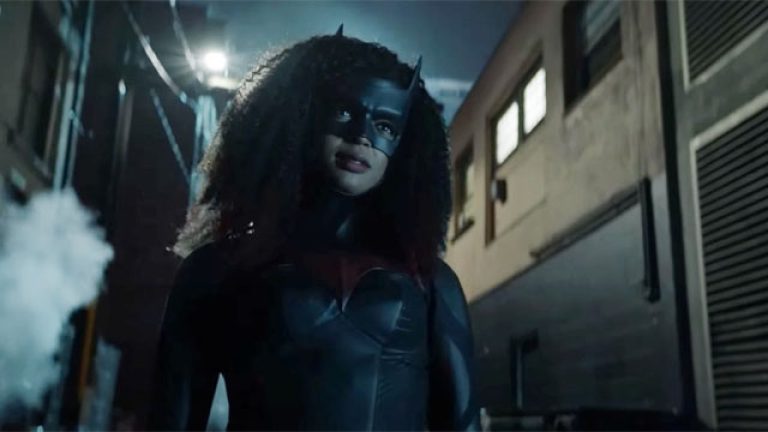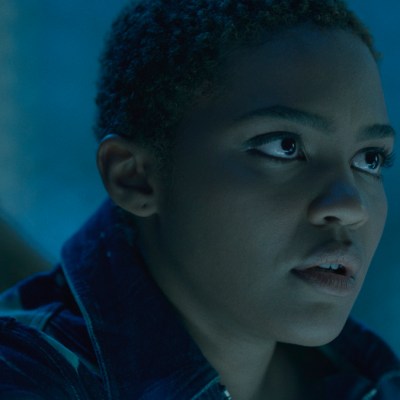Batwoman is So Close to Becoming a Truly Radical Superhero Story
In Season 2, Batwoman is almost engaging with the real question of who and what Gotham actually needs.

This Batwoman article contains spoilers for Season 2, Episode 10.
The latest episode of Batwoman, “Time Off For Good Behavior,” continues this season’s trend of examining Gotham’s authoritative structures from new angles and through different lenses. Ryan Wilder is the product of a system that not only did not protect her but actively worked to ensure that she and other kids like her did not escape the cycles of poverty and violence that trap them in lives of criminality. Ryan was adopted out of foster care in her late teens, which saved her, but didn’t spare her from being preyed upon by those who sought to take advantage of the weak and vulnerable. The death of Ryan’s mom at the hands of the Wonderland gang is not just a personal tragedy, it is ultimately the catalyst for Ryan becoming Batwoman. Still, between that loss and finding the suit, there are a lot of systemic barriers that could have convinced Ryan that crime was her only option—which is what happened with Angelique.
Ryan and Angelique came up in the foster system together, which is where their bond formed and their relationship developed. But, unlike Ryan, Angelique wasn’t saved from that system by an attentive adoptive parent. She found ways to survive, and thrive, in the criminal world because she had to, or because she couldn’t see that there was another choice. They were both molded by their shared history of neglect but Ryan was taken out of that environment long enough to know that it wasn’t the only way. Angelique, however, had to work with what she was given, so she created a lane for herself in the criminal world, where she found financial security and a sense of freedom. But that world isn’t so hard to leave, which she learns the hard way. After taking the fall for the murder of the GCPD commissioner, Angelique is finally convinced to flip on the masks that were responsible. But when she’s released into witness protection, the False Face Society intercepts her. She’s abducted—not killed—because she’s the only one who can produce Snakebite now that Ocean has left Gotham.
In the previous episode, Ryan is introduced to Sophie’s sister, Jordan, who is a community activist. Jordan reminds Ryan of the myriad ways one can benefit the community, and it becomes a part of the Bat Team’s core principles, to stand for something bigger than themselves. Ryan and Mary help get a community center off the ground, something Ryan acknowledges she and Angelique would have benefitted from when they were coming up. On the evening of its debut, the center is attacked by a man wielding a lightning gun. This attack comes after a reporter from the Gazette asks about the community center being a target, which seems to be more than coincidence. When Batwoman questions the reporter, he reveals a pattern of destruction that targets all community-driven projects in inner city Gotham.
The Bat Team uncover a conspiracy by the wealthy owner of a private prison to keep funneling bodies into their facilities, by ensuring there are no safe havens for the underprivileged youth of Gotham. The warden lets violent prisoners out for a night to destroy newly built community centers, in exchange for shortened sentences and “time off for good behavior.” Denied resources and refuge, inner city youth get caught up in crime, which means more incarceration, and ultimately more profit for prisons. This is the reality for many lower-income neighborhoods, and Black and Brown communities that are under-resourced and over-policed. In Batwoman, the culprit is a Scooby Doo villain that can be exposed and punished. But in real life, these issues are structural, systemic, and inherent. Batwoman can’t take on the entire prison industrial complex but she can take on one man who has a hand in it.
Batwoman is almost engaging with the real question of who and what Gotham actually needs. Unmasked, Ryan is just a manager at a bar. But she is also an employee of and friend to Mary Kane, a billionaire. Even without being Batwoman, proximity to that much wealth and power gives Ryan an opportunity to influence, to point her wealthy friends in the directions of causes that could use their financial support. A billionaire vigilante is always hard to reconcile because wealth shields them from so much, and it’s hard not to question why they don’t just use their considerable wealth to do something. But Ryan is the product of the Gotham that the Waynes and Kanes don’t really know. Ryan’s history within both the foster care system and the criminal justice system gives her insight into Gotham they can never have. Her experiences not only inform who she is as a person but what she embodies as a hero and how she wields her newfound power.
Batwoman hasn’t been afraid to ask the question of what Batwoman can do for Gotham, but it hasn’t fully examined how the wealth that surrounds Batwoman is capable of so much more. Even in this episode, it is unclear what, if any, financial contribution Mary made to the community center. And while her presence and influence alone definitely amplify the cause and draw attention and increase funding, she has literal billions at her disposal. This season has been good about calling things—racism, abuses of authority—out, but if the writers fail to really examine the wealth issues, and fail to take these characters to task, Batwoman might begin to feel like performative wokeness.

